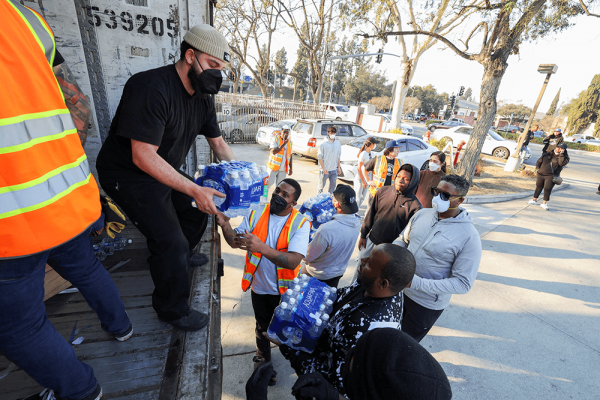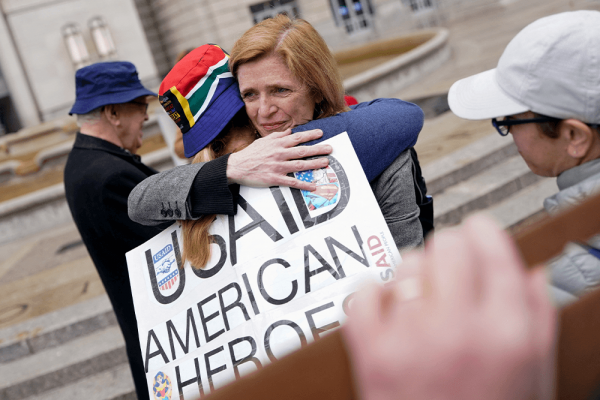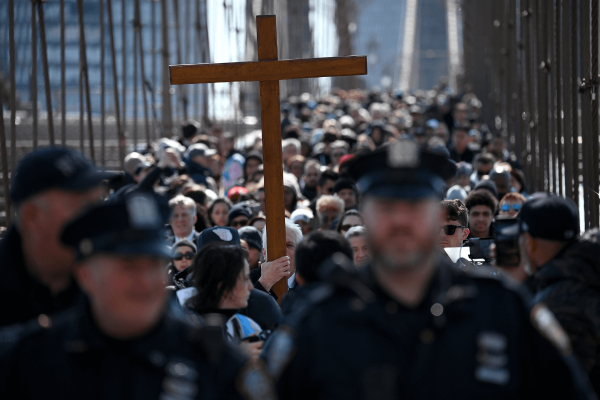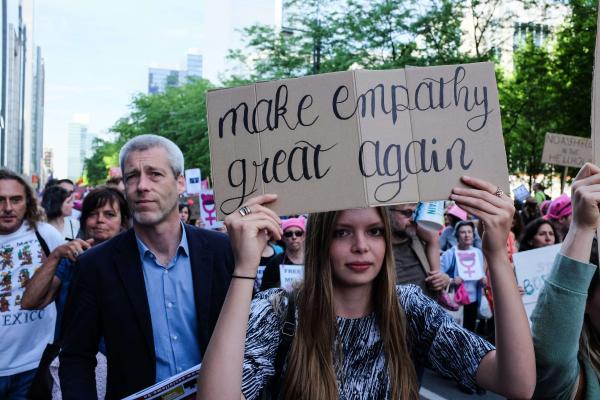On June 20, a rocket is scheduled to blast off from NASA’s Wallops Flight Facility in Virginia, carrying precious cargo: a solar cell science project from Nestor Epinayu, 16, and his fellow science club members from a small Indigenous community in Colombia. More than just a children's science project, solar energy plays a huge role in bringing electricity to this community in La Guajira, on the border with Venezuela.
When Sojourners spoke to Epinayu by phone recently, he was at the Ricardo Gomez high school in the Manaure municipality. He is part of the Wayuu ethnic group, which according to the Colombian government is the country’s largest indigenous group.
“I came to Colombia in 2014 from Venezuela — my grandmother and mother are both Wayuu, so they brought me and my brother here and now most of our family is here.”
The Wayuu culture predates the countries of Venezuela and Colombia. Before the border was closed in February 2019, many Wayuu passed from one state to the other.
Epinayu says they also have a cultural connection with the night sky. “When our ancestors died, they went up into the sky, each star represents one of them — that’s what my family says.”
Water, health in crisis
La Guajira is also in the midst of a major health crisis, as underfunded Colombian hospitals strain to cope with the influx of Venezuelan patients, particularly mothers and children, who can’t access even the most basic care back in their home country.
This has exacerbated malnutrition and other health issues that were in turn amplified by a major drought that took place from 2011 to 2015 and ongoing poor allocation of water resources.
Even though there are 1,200 wells and wind-driven pumps in the region as of 2015, 70 percent of these were not in use due to lack of maintenance, according to a report from the United Nations Development Programme.
More troublingly, the government built a dam in 2011 on the Río Ranchería, a river which used to provide water to more than a third of the region’s municipalities, but the water supply now provides water to private rice and oil palm crops, not communities.
It was into this parched place that an NGO began to combine basic science education with a practical goal.
Carolina Salguero is executive director and co-founder of Del Lab al Campo, which has been working at the Ricardo Gomez school for more than two years in order to teach Wayuu youth how to use and maintain photovoltaic solar energy systems.
Salguero said the group worked with Colombia’s National University and solar company Elecprocol to train the school’s teachers in science teaching strategies. The group also installed four solar panels within the school, allowing science equipment and electronics to be used for the first time.
wayuu_space_-_2_1.jpg

“This is not only to obtain a sustainable source of energy, but also to obtain purified water that can be used in small sustainable farms,” Salguero said. She shared that a library, a small laboratory, and an elevated water tank are also in the works.
Del Lab al Campo has brought one-week workshops to the school, covering a range of topics from basic concepts of the physics of music; marine and molecular biology – and making photovoltaic cells.
From solar to the stars
The cell workshop was presented by Daniel Cruz, one of the Del Lab al Campo co-founders and a PhD candidate at Germany’s Max Planck Institute of Colloids and Interfaces. Cruz donated all the materials used for the cells and when he came back to Colombia to conduct the workshop, he brought the components in his luggage from Germany as that was the best way to get them to such a remote region.
“Mixing the chemicals was the tough part,” says Epinayu, who participated in the workshop to make the solar cells, “we had to be very careful with the mix.”
It was through a connection between Cruz and another Colombian scientist that the opportunity arose for Wayuu students to put their experiment in space.
Jose Dario Perea is a Colombian postdoctoral researcher at the Photovoltaic Research Laboratory at the Massachusetts Institute of Technology (MIT). Back in 2017, he helped a group of students, from his native city of Cali, Colombia, put organic solar cells into space with a program called Cubes in Space — a world-wide competition for science students between 11 and 18 years-old to design, propose, and launch experiments into space on an official NASA mission.
“We applied again this year, this time with the Wayuu students,” Perea told Sojourners.
wayuu_space_5_1.jpg

Thanks to the Stellam Foundation and Cubes in Space, some of the solar cells made in the class, fitted inside a small plastic cube, will be launched into space alongside other experiments from the U.S. and across the world.
A robotics student from the previous Cali group, Alejandro Quintero, 14, also has reason to look forward to the June 20 launch event, as he is raising funds to go to the U.S. to attend workshops to further his aim to become an astronaut.
Back on terra firma, it is clear to Salguero the solar project and its space-launch element is having an impact in opening young minds to science in this frontier region.
“In one visit, we asked the students to group up and give themselves group names – the girls sat together in a corner and called themselves ‘las científicas’ (the scientists),” Salguero said. “I cried instantly cause I knew we were already making a difference in how they see themselves, and what they can achieve.”
Got something to say about what you're reading? We value your feedback!







